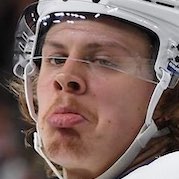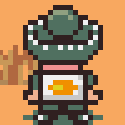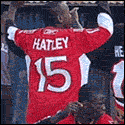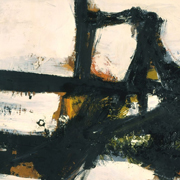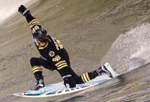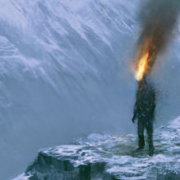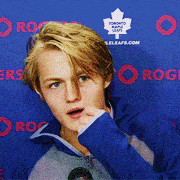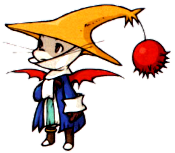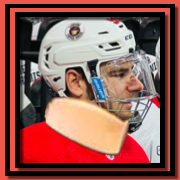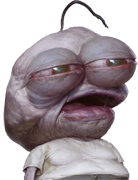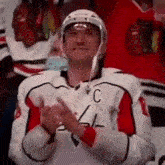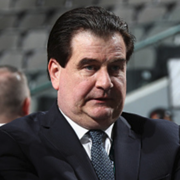|
Good Soldier Svejk posted:reposted hot take because I still miss the thrill: I mean, I would take an rear end return for Kessel if it meant my team won two Cups back to back with him. 
|
|
|
|

|
| # ? May 2, 2024 07:15 |
|
mentholmoose posted:And what is the deal with airline food!? Seinfeld voice: “what’s the deal with the age of consent anyway?”
|
|
|
|
https://twitter.com/PredsNHL/status/1577074200627490816?s=20&t=FJX4gYWSlelgJaBjCjo81g
|
|
|
|
CBJSprague24 posted:I mean, I would take an rear end return for Kessel if it meant my team won two Cups back to back with him. It's more about they ditched him just because and got nothing in return. Whether it was something with Sullivan or GM Jr doing his stupid poo poo who knows.
|
|
|
|
Everyone who has ever coached Kessel hates him, it's just part of the package.
|
|
|
|
https://twitter.com/frank_seravalli/status/1577006060480888838?s=20&t=LTjiKox0TGWTqoPeau84rg Pens just offerin POJ to everyone
|
|
|
|
I'd be intrigued with him on the Rangers as the 7th D but they're probably going to torture Hajek for another year
|
|
|
|
Starsfan posted:more hockey model projected standings for you all!! I skimmed the article and he's projecting the Canucks running a 65/35 split with Demko... and a slightly-below-league-average Colin Delia? The Canucks to win the Pacific without Demko channeling '06 Luongo and playing 70 games, without Spencer Martin channeling, well, 2020 Demko and maintaining a .950 SV% somehow? That's interesting! quote:By far the most interesting division (to me) is the Pacific, where upheaval (Calgary) or persistent management confusion (Edmonton) or both (Vegas) have opened up the division. Vancouver's strengths lie primarily in their very good goaltending combined with their recent upgrade in coaching; the division on the whole is fairly weak. I guess his model includes coaching, I don't think many of the others try to account for coaching effects. I don't think even Boudreau can continue polishing this turd to a 106-point pace but he's probably still a net positive. Micah also projects the playoff cutoff at 91 points in any division which can't possibly be right. I don't remember it ever being that low in the OTL era, and we've got like five teams trying to tank this year. fisting by many fucked around with this message at 05:33 on Oct 4, 2022 |
|
|
|
Avs ran their powerplays as 2 forwards, 3 defensemen tonight. They have the mobile defensemen to make that sort of setup work, but it was very strange.
|
|
|
|
The biggest individual issue with the superimposed board ads will be the fact they probably still won't employ any sort of simulated motion blur on them, just like they don't on the virtual on-ice ads already. In hockey, the camera is almost constantly panning in one direction or another, and so to have a major element in the picture (like the boards in their entirety) remain completely sharp while the actual real-world footage gets naturally blurry, it causes a big mismatch in our brains. Uncanny valley as gently caress. e: Then again if they do in fact have animated ads during play, that's going to be even so much worse. Regardless, I hate it. Jersey ads, helmet ads, complaining about those is almost petty compared to this massive change, at least in terms of the TV experience. Zat fucked around with this message at 14:54 on Oct 4, 2022 |
|
|
|
Fresh off the franchise’s best season of the 21st century, the Panthers did what you’d expect. They fired their head coach, then packaged an MVP candidate and a top-pair defenseman in the same blockbuster deal. Standard stuff, really. Goodbye, Jonathan Huberdeau, MacKenzie Weegar and Andrew Brunette. Hello, Matthew Tkachuk and Paul Maurice. Ideally for the Panthers, the new guys will bring with them a more playoff-ready style and, who knows, a conference title. Ideally for the rest of us? Another season’s worth of breakneck offensive hockey and more multi-goal, third-period comebacks than Bill Zito can stomach. The projection is strong, and the roster is, too. It’s time to see whether one of the busiest teams of the offseason is still one of the league’s best.  The projection It should be of little surprise the Panthers are projected to win a lot of games next year considering they won a lot of games last year. Yes, there were some epic personnel changes, but this is still a deep group with a high-end core capable of taking over games. The Panthers led the league in points last season and they’re expected to be in the mix again this season with an 11 percent chance. With a 105.9-point projection, there’s little doubt about Florida having a lot of on-ice success this season. The Panthers make the playoffs 94 percent of the time and earn at least 100 points 79 percent of the time. That’s in line with how often the team finishes in the league’s top 10, with a top-five finish being a virtual coin flip at 48 percent. The Panthers are as close of a playoff lock as a team can reasonably be and the only real question is regards how high they’ll go. Of course with a stronger team comes rising expectations — it’s not enough to have a good regular season, it’s the playoffs that matter. Postseason success has eluded the Panthers for almost their entire existence and though last year featured the team’s first series win in … 26 years (!!!) the season still felt like a crushing disappointment. With a Presidents’ trophy comes the expectation of a deep run and the Panthers did not get that after getting unceremoniously swept by their cross-state rivals in Round 2. The key to contending isn’t going all-in for a one-year peak — it’s sustained excellence offering multiple kicks at the can. The Stanley Cup is the hardest trophy to win due to the rare combination of skill, grit and luck needed to earn it. Florida didn’t have that combination last season, but the team looks well poised to try again this season and beyond. The Panthers have a 52 percent chance of advancing to the second round again, with a 27 percent chance of going deep. The cruel Atlantic Division puts a damper on those odds, but Florida still looks like a team that will be a very tough out. Not many teams would be favored against them in a seven-game series. Of course, there’s one caveat to all of this. The model doesn’t know that Paul Maurice is going to be behind the bench this year. After a career for Maurice of posting mediocre results, it’s difficult to be as excited about the Panthers as the model knowing who’s now behind the bench … but we’ll get to that. The big question Was acquiring Matthew Tkachuk worth losing both Jonathan Huberdeau and MacKenzie Weegar? This is a really tough one and it’s what made the trade so fascinating — now and beyond. Given the rumoured offers around the time, it sure seemed like the Panthers paid an exorbitant cost to land Matthew Tkachuk. Having said that — it’s not often that a player like Tkachuk even comes around, let alone enters the trade market so it makes sense that Florida would pounce on the opportunity. Tkachuk is a unicorn of a player — a power forward who can do a lot of things extremely well. He can shoot and pass, he can drive play at both ends of the ice, and he has a rare combination of finesse and grit. There’s no one like him in the game right now, not at his level. He’s a franchise player in the prime of his career — one who is now locked in at a below-market rate for the next eight seasons. That cost certainty for a player’s peak is huge, and Tkachuk’s peak looks to be extremely good. He should be one of the league’s best players for a long time and is a model favourite. His projected 4.5 wins ranks sixth in the league — though we personally placed him closer to 16th to 21st when debating his value for the Player Tiers project. That’s obviously still great, it’s just a case of the model being overzealous. Either way, Tkachuk is amazing, but … Jonathan Huberdeau and MacKenzie Weegar? Both?! That’s a lot to give up which is what poses the initial question. Long term, the Panthers win the deal by virtue of getting a better, younger, cheaper forward. Tkachuk is the type of franchise guy that Huberdeau hasn’t quite proved himself to be, is five years younger, and will be paid $1 million less per season. That’s an easy win and though Weegar is a substantial loss on top of that, he’s also on the wrong side of the age curve. There’s eventually a point of equilibrium way down the road where Tkachuk, because of his age, will be worth more than Huberdeau and Weegar combined, at a much lower cost. Teams with the league’s best players thrive because they can concentrate more value into lesser spots, with big surplus value over their salary. Tkachuk fits that bill with a deal that should age really well. The back half of the deal Huberdeau signed and Weegar will sign won’t be nearly as pretty. That point of equilibrium likely won’t be reached this year though and that’s where there is some debate. In the short term, the Panthers are likely a worse team with Tkachuk in the lineup and Huberdeau and Weegar out of it. Tkachuk is projected to be worth 4.5 wins, though that’s probably overselling him a bit. In contrast, Huberdeau (3.1 wins) and Weegar (2.6 wins) combine for 5.7 wins — 1.2 more than Tkachuk. The issue with the deal is most apparent on the back end where Florida immediately looks thinner. Of all the contending teams, Florida’s blue line is the sketchiest with a massive hole in the top four left in Weegar’s wake. The Panthers did nothing to replace Weegar and now have what essentially equates to Aaron Ekblad plus five guys. It’s not pretty and if Marc Staal is really slotting in the team’s top four, the Panthers will have some pretty large problems that Tkachuk won’t be able to solve from the left wing. Tkachuk should be able to make up for that a bit up front as an upgrade over Huberdeau, but it’s not enough to fully offset the loss of Weegar. With the lineup imbalance, it may also just be difficult for Tkachuk to be as effective if he indeed slots on the second line. That’s less time with Ekblad and the top pair and more time with a lackluster bottom four. For a team that is fully in “win-now” mode, it’s a little dicey and makes the Panthers a lesser bet to win it all this season. But the move was still very much worth it for how Tkachuk’s presence extends the team’s timeline to win. For a team that just reached the league’s pinnacle, the Panthers were in dangerous territory of having their window shut sooner than anticipated just by virtue of the trajectory of their best players. Swapping Tkachuk in changes that. It may lessen Florida’s expected Cup probability this year, but it adds enough in the future to be well worth the deal. The wildcard Is Paul Maurice the right man behind the bench? Before we go into whether the Panthers hired the right coach, it’s worth wondering whether they fired the wrong one. On one hand, Andrew Brunette took the reigns during an unexpectedly chaotic time — after Joel Quenneville resigned over his role in the Blackhawks’ sexual assault case — and helped build a wagon of a team. The Brunette Panthers averaged 4.12 goals per game. Next best in the last six seasons were the 2017-18 Lightning, at 3.84, and we all know what happened there. Certainly, nobody went out and fired Jon Cooper. Inexperienced coaches can improve, and one early exit does not a habitual underachiever make. On the other hand, the Panthers really did get waxed once the playoffs rolled around. They burned a lot of fuel against what should’ve been an overmatched Capitals team, then failed to make their semifinal series against Tampa Bay so much as interesting. As great as Florida was in the regular season, coming back from three-goal deficit against the Red Wings in February and trying the same against Tampa in May are … not the same. They weren’t ready. Tweaks would’ve been necessary no matter what. Bill Zito didn’t settle for tweaks. Rather than letting Brunette continue to learn on the job and gain experience, Zito brought in Maurice, who has plenty on his own — he has coached more games than all but three people in the history of the NHL. The question is how much all that experience is worth. Maurice, as noted by Travis Yost, is one of three coaches with at least 1,000 regular-season games behind the bench and a sub-.500 winning percentage. In 24 seasons, his teams have made the postseason nine times. They’ve advanced beyond the first round thrice. His late-era rosters in Winnipeg were known for rough five-on-five play — consistently outshot, consistently losing the expected goals battle — that was wallpapered over by huge shooting percentages and the play of Connor Hellebuyck. So, yes, it’s a gamble. Still, Maurice has stuck around for a reason, and he probably never has coached a team this loaded. Change, come the spring, was going to be necessary. It’s on him to make sure it’s in the right form. The core Matthew Tkachuk, Aleksander Barkov, Sam Reinhart, Sam Bennett, Aaron Ekblad, Gustav Forsling, Sergei Bobrovsky Most of Florida’s core is still intact after their summer, but the couple of changes that were made — Huberdeau for Tkachuk, Weegar out and Forsling promoted — are sure to have a ripple effect on this roster. The Panthers’ core is still led by Aleksander Barkov, who probably would have been lauded as the team MVP had he not missed time with injury. In 67 regular-season games, Barkov scored an impressive 39 goals and 88 points. When accounting for minutes played, it equates to the best pace of his career at 3.88 points per 60. That ranked 11th in the league and second in Florida, behind only Huberdeau (and also trailed his new teammate, Tkachuk). Barkov’s becoming a mainstay in the Selke conversation because of his two-way efforts. He unquestionably had the offensive side down at five-on-five. His isolated impact increased the Panthers’ expected goal generation almost 10 percent more than the average skater would have in his minutes. And he was still a positive back in his own end while going up against top competition. The Panthers’ pivot thrived at blocking passes, using his stick to check the puck away from opponents, and intercepting opponents’ exit attempts to extend zone time. That all translated to his special teams play, from the penalty kill to the top power-play unit that he quarterbacked without a defender to end the year. Generally last season, Barkov didn’t play with Huberdeau at five-on-five. Instead, he’s been paired up with Carter Verhaeghe and would reunite with the playmaking winger on the advantage and in crucial moments of the game. So, that may be a sign of what’s to come for Barkov and Tkachuk to promote balance in the top six. They’re the two most valuable skaters in Florida. Tkachuk edges out the center at 4.5 projected wins, and the question is whether he can maintain that away from elite linemates and the structure of the Flames. Florida adds an incredibly skilled forward in Tkachuk, who has the hands to pull off slick plays in close with his passing and shooting. Add in the pesky antics, and it makes sense why so many hockey lifers love what he brings to the table. With the Panthers, Tkachuk should still have support down the middle whether it’s former Flame Sam Bennett or Sam Reinhart skating as the 2C. That lineup versatility is still a strength of Florida, though not to the extent of last year. But he won’t have one of the best puck movers in the league at his side in Johnny Gaudreau. While Tkachuk was able to bring the puck into the offensive zone with control at an above-average rate last year, Gaudreau was the puck carrier of that combination without question. So it’ll be curious to see how he manages without that. If he struggles, there’s an easy answer in moving him to play with either Barkov, Verhaeghe, or both — but then comes the question of lineup balance. Someone who may really feel the departure of Huberdeau is Bennett, who played some his best hockey alongside the pass-first forward. In Tkachuk he’ll obviously still have an elite winger, but the Panthers will have to see how their skill sets mesh. It’s a question that Duclair will face when he returns from an Achilles tendon injury. At five-on-five, his shots tended to be preceded by a high-danger pass and there isn’t anyone on Florida (as it stands) who checks off that box. Another option to play 2C or top-line wing is Reinhart. Playing on a contender instead of a basement dweller clearly clicked with the forward, who scored at a career-high rate of 3.55 points per 60 and made a positive impact at five-on-five below the surface. The question is whether he can maintain that level in a larger role after primarily playing in the top six. The Panthers’ forward core is strong, but their top two defenders help round it out — with a collective value of 19.9 between their top four forwards, two defenders, and goalie, they rank fifth in the league. Ekblad has a lot to do with that, worth a projected 3.6 wins. The defender was once again a Norris contender, but saw his regular season cut short by injury. He checked off quite a few boxes in the race pre-injury — the scoring 57 points in 61 games, a 58.8 percent expected goals rate at five-on-five (and even better goals percentage of 63.4), strong zone-entry defense, and usage in all situations and against top competition. But now he’s going to be without Weegar, who he played 87.7 percent of his five-on-five minutes last year and 85.7 percent with the season before. Ekblad’s shown that he’s a very good defenseman in his own right, but is a lot better when he has Weegar’s support. Now, he probably won’t be completely on his own if the Panthers stack the first pair. Gustav Forsling has really hit his stride in Florida these last two years after a rough start to his NHL career in Chicago. He’s a very good partner to have, and with a collective value of 5.6 wins between Ekblad and Forsling, that top pair projects to rank second in the league. That’s the same place they’d be if it were Weegar in his place (though at a slightly higher value of 6.3). The problem is what that leaves in the bottom four. By internally replacing Weegar with Forsling, there no longer is a strong defenseman to lead that second pair. It may ensure Ekblad and Forsling continue to take on top competition, and puts more pressure back on the goaltenders when the bottom four are on the ice. Sergei Bobrovsky is coming off his best regular season in quite some time. He saved 12.1 goals above expected in all situations which is a major rebound from a disastrous GSAx of minus-10 in 2020-21. While Bobrovsky wasn’t perfect in the postseason, his team’s elimination didn’t rest on his shoulders. It’s a step in the right direction, but it’s no guarantee of what’s to come. The difference between Bobrosvky’s two seasons alone show the volatility of the position, and while there’s reason to believe he can be above average again, the weaker defense may be quite the challenge for the $10 million goalie to overcome. The support Despite an exodus of talent in July — led by Claude Giroux, Mason Marchment and Ben Chiarot — the Panthers still have one of the strongest support groups in the league. They’re at sixth, with 9.3 wins of value chiefly coming from three middle-six forwards. Carter Verhaeghe has been a model favorite since the wake of his nine-game stint with the Lightning in 2019-20. Ahead of last season, his second with Florida, Verhaeghe had a projected GSVA of 2.5. He didn’t hit that number, but he came close, finishing up with a 2.1 that was still top-line caliber. Was part of that due to his playing time with Barkov? Sure. But Verhaeghe’s strong numbers in 465:34 away from Barkov — 60.5 actual goals for percentage, 55.6 expected goals for percentage, 57.8 high-danger chance percentage — bode well for this season if Tkachuk winds up on Barkov’s left wing. If you’re worried about what Verhaeghe will look like with Huberdeau, don’t. They barely played together. He does heavy lifting on zone entries, and his offensive output (24 goals, 28 assists at even strength) is well balanced. Per 60, his 2.56 points are 30th among NHL forwards with at least 800 minutes played. Duclair, who turned 27 in August, is coming off the best season of his career in nearly any way you could slice it, setting highs in goals (31), assists (27) and points and per/60 rates across the board. Away from Huberdeau — as he was in about half his time on ice — his expected goals for rate increased from 49.7 to 54.7 percent, and his actual goals rate stayed put at 61. The question is how he fares away from both Huberdeau and Barkov. He played only 185 minutes without either of them last season, to (expectedly) worse results. Anton Lundell’s rookie season was a pleasant surprise. The No. 12 pick in 2021, Lundell showed some nice playmaking and production (17 goals, 22 assists at five-on-five) with a shooting percentage (14.4) that could dip a bit. It could also just be who Lundell is. He only has 65 NHL games to his name. The same lack of track record — he basically has never been bad — gooses his GSVA projection for this season. In all, he’s a valuable depth piece on an entry-level deal with room to grow. He also showed signs of contributing on the penalty kill. From the rest of the forward group, Colin White is an interesting, low-risk reclamation project as a defensive bottom-sixer. Rudolfs Balcers could add some play-driving depth at right wing, especially if he gets a shot with Barkov. Patric Honrqvist still seems capable of knocking in 10-15 goals and providing physicality without being too much of a drag on his linemates. The second and third defensive pairings aren’t particularly interesting. Radko Gudas spends a lot of time defending zone entries and likely has better puck retrieval skills than you think, though we’ll see how he looks away from Forsling. Marc Staal’s value bounced back a bit with Detroit last season, but he’s 35 and shouldn’t be asked to do more than play defensive minutes on a third pair. Unfortunately for Florida, he finds himself in the top four to start the season which is a definite red flag for the season to come. Brandon Montour bounced back last season after a few brutal ones; he also seems like a regression candidate under Maurice. He’ll be tasked with sheltering Lucas Carlsson on the third pair. The duo was fine last year, though that was in a very cushy role. Spencer Knight, as a full-time NHL goalie at 20 years old, found his stride. In his last 14 starts, he put up a .921 save percentage and went 10-3-1. That streak brought him nearly to a break-even point in goals saved above expected and helped him wind up with a three-year deal worth $4.5 million AAV. He’ll be the full-time starter at some point during that contract. The bottom line Over the last year, the Panthers have been nothing short of bold. Management went all in at the deadline. When it seemed they had few options to really spice up this roster after a disappointing exit last spring, big changes were made over the summer. Now, Florida is all in once again. The team is likely going to lean on their exciting (and chaotic) brand of hockey, and hope that their offseason changes were enough to bring different results. The Panthers look to be regular-season contenders, but they learned very quickly last year that only means so much once the playoffs roll around.
|
|
|
|
There were plenty of memorable moments during the Avalanche’s Stanley Cup run. We’re not going to recount them here. It’s a new season. Time to flip the calendar, or something. If you’re feeling nostalgic, there are books you can buy. There is one thing worth remembering here, though: The way Colorado’s season began. They lost six out of their first 10 games, after starting out as everyone’s preseason pick, without looking particularly good in the process. If anyone overreacted back then, they shouldn’t have; 10 games isn’t a season, and it’s certainly not enough to write off a team that has all the ingredients of a juggernaut in place. We know what happened next. Now, after breaking through in the biggest way possible, the Avs are gunning for another one with a few new faces and some shuffling of the previous deck. If they start slow, don’t write them off. Remember how we got here in the first place.  The projection Last year’s Stanley Cup champions come into this exercise with a somewhat surprising projection: Not only are the Avalanche not first in the league, they’re not even first in the West. Colorado’s 106.6-point projection is strong and the Avalanche still have an 11 percent chance of repeating, but it’s a far cry from what many likely expected. The defending champions are a model franchise and have been the preseason favorite each of the past two seasons — last year to an overwhelming degree. To see them fall back might come as a bit of a shock. It shouldn’t though, not with what Colorado lost this offseason. Between Nazem Kadri, Andre Burakovsky and Darcy Kuemper, the Avalanche lost a lot of value this summer. All three project to be worth between two-to-three wins of value, an amount that won’t be easy to overcome. That Colorado still ranks this highly is a testament to the team’s elite core and the pieces already in place throughout the lineup. For most teams, that would be a pretty devastating offseason. For the Avalanche, it’s just a setback for their dynastic hopes, one where they come in as the third most likely to win it all rather than the top dog. Colorado made strides to replace what it lost, both internally and externally, and those are all wait-and-see bets that the model will struggle to give full credit for at this current time. That suppresses the team’s current odds, but it wouldn’t be a shock to see most of their bets hit — increasing the team’s odds as the season progresses. For the top teams who are essentially a playoff lock — and Colorado is at 96 percent — it matters more what their odds will be 82 games from now, not so much right now. It helps that Colorado has elite support that gives those bets higher upside. The team’s core ranks first in the league by 2.3 wins, giving the Avalanche by far the best foundation in the league. That’s usually the best recipe for success in this league, the base of a winning dish. Consider the supporting cast as the seasoning that helps elevate that dish to the highest heights it can reach. Without it, the meal is pretty bland. That was the problem during the first few seasons of Colorado’s rebuild, but the team slowly and meticulously built a powerhouse around its elite core. This is the first year with major losses and it’s tough to say how the team will handle it until they hit the ice. There’s a little bit of pessimism at the moment from the model, but it’s easy to be optimistic given the chefs in charge of preparing the feast. We won’t fully know how good the meal is until we get a taste of it in April, but for now, it still looks like a strong combination of flavors ready for another year of greatness. The big question Can the Avalanche repeat after losing Nazem Kadri, Andre Burakovsky and Darcy Kuemper in the offseason? Sometimes, the shortest answer suffices. So … yes. Yes, the Avalanche can repeat without those three. The team we watched last season is better than any three complementary pieces, regardless of where they fall on the good-great spectrum. Does Cale Makar still play here? Does Nathan MacKinnon? Yeah? OK, then. Now, will it be tough to repeat? It always is. Could the replacement plans not pan out? Sure. Can the Avs still be championship-caliber but a bit worse off? Sure. In fact, that’s what they’re on track to be. It’d be tempting to say Kadri had the sort of season most of us expected out of him, at some point. It also would be wrong. For all Kadri’s talents, “top 10 in even-strength points/60” was a level, especially in his 30s, that seemed like a stretch. That’s exactly what the Avs got from him, though. Kadri’s gigantic jump in production helped Colorado weather stints without MacKinnon and, when at full strength, gave them a level of insulation for their top line that they hadn’t previously seen. Throw in what Kadri brought to the postseason, and it’s easy to think that they wouldn’t have won the title without him. Probably wouldn’t be wrong, either. The issue for Kadri — and, on some level, his new team in Calgary — is that a follow-up act would’ve been tough. Going back to that even-strength points/60 number, Kadri’s 2.98 represented a 1.19 year-over-year jump. In his previous five seasons, he’d only been within 0.93 of that number once. Mix in his age (32 at the start of the season) and his teammates’ on-ice shooting percentage of 9.79, and a repeat performance wasn’t likely. His replacements will be some combination of Alex Newhook and J.T. Compher. In pure GSVA terms, it’s a downgrade; Kadri is at 2.6 in Calgary; Newhook is at 1.0 and Compher 0.7. The best-case scenario for the Avs would be for Newhook to win the 2C job and run with it. He’s a first-round pick with offensive pedigree, solid production in his first full NHL season and the skill set (speed, creativity, compete) you’d expect from a top-six player in the NHL. That, in fact, is what Corey Pronman expects from him. Compher, like Newhook, drives play more on the defensive side but lacks his offensive potential. Neither is likely to replace Kadri’s production from last season — few would be — but given a consistent run with skilled linemates, they could also come close enough. In Burakovsky, Colorado is losing a 1.9-win player and a top-six wing with legitimate offensive punch, both in terms of point production and play driving. He was one of eight players to score more than 2.5 points-per-60 in each of his last three seasons. His replacement, in some capacity, is Evan Rodrigues, an effective two-way forward who went on a shooting-percentage rollercoaster with Pittsburgh last season; three months at 11.4 percent or better, three at 4.8 or worse. Maybe that evens out for another 19-goal season, maybe not — but he brings enough elsewhere, down the middle and on either wing, to be worth more than his one-year, $2 million deal. It was a very Avs signing. Replacing Kuemper might be a tougher proposition. His issues in the postseason, stemming mainly from a horrific eye injury that he quickly returned from, probably obscured how good he was on balance during the regular season, particularly from Jan. 1 on, when he posted a .928 save percentage. Overall, he was top five in save percentage (.920) and Goals Saved Above Expected (15.86). It was also easy to see why Colorado moved on; Kuemper’s contract with Washington was a no-go (five years, $5.25 million AAV), given the Avs’ cap issues. Plus, the Avs have a track record of goalie rehab, between Kuemper and Philipp Grubauer … and we all know what happened to Grubauer in Seattle. Factor in Kuemper’s post-injury struggles, and the fact that the Avs won despite them, and it was reasonable to roll the dice on a new guy. The question is whether Alexandar Georgiev was the right dice roll. His performance cratered last season (.898 save percentage, minus-5.3 GSAx) after a promising start to his career. He wasn’t playing much for the Rangers, and anyone would look bad behind Igor Shesterkin, but that was still a choice, especially at $3.4 AAV for three seasons. Pavel Francouz (.916 last season with a break-even GSAx and some solid playoff performances) may wind up as the better bet. The Avs deserve the benefit of the doubt here, just as they do in most cases. Most of all, they don’t have to be better than they were last season. They can even be worse, given the rest of the roster. They’ll certainly be different. That’s the way it goes, though, for a salary-cap champ. The wildcard Was Bowen Byram’s playoff performance a sign of things to come? Drawing conclusions off a player’s postseason performance is nothing new in the NHL — just ask a number of free agents who popped off in the playoffs ahead of a new contract. But Bowen Byram’s case is a bit different. The defender isn’t even 22 yet, and has yet to hit his prime. He has just 49 regular-season games to his name at this level. But his performance, really since his return in April, was encouraging for a player who hasn’t had it easy. On his way to a Stanley Cup, Byram earned nine points in 20 games. He may not have been the man for Colorado, but he didn’t have to be — not with Makar and Devon Toews leading the way. But after Sam Girard was sidelined with injury and the second pair didn’t have a high-caliber replacement, the third pair became even more important. At five-on-five, Byram skated alongside Erik Johnson for about 197 minutes; the duo earned a 60 percent expected goals rate (and an even nicer 69.1 percent goals rate) which was one of the strongest markers of the playoffs. The playoffs are a small enough sample as is, but outside of those almost 200 minutes, Byram saw shifts with other defenders, including Makar and Josh Manson, and thrived in those minutes as well. Obviously, there’s only so much to take from all of that. It was only 20 games, after all, and Byram now only has a combined 69 games of NHL experience. But there’s a reason the Avalanche were high on the 2019 No. 4 pick — and the team got to see more than just glimpses of his potential in Year 1. If he continues at this rate, and there’s very good reason to believe he will if he can stay healthy, it should instill confidence into the future of this blue line. The good news is that Colorado has another year to assess his play before making any decisions since he has a year left on his ELC. It’s better off this way because the Avs may have to cut costs ahead of his next contract if he thrives, and that cap casualty could be Girard’s contract. Colorado just has to be sure of what they have on the depth chart behind him in Byram first. The core Nathan MacKinnon, Mikko Rantanen, Gabriel Landeskog, Valeri Nichushkin, Cale Makar, Devon Toews, Alexandar Georgiev The Avalanche won the Stanley Cup on the back of its cornerstone pieces, the best current example of what a strong foundation can do for a franchise. No other club is projected to earn more wins from its best players than Colorado, which receives an A-plus for its core — the only A-plus given for this category. It’s because the Avalanche core ranks so far ahead of the pack at 23.1 projected wins — 2.3 wins more than the next best team (or one Valeri Nichushkin) and almost 10 wins above average. MacKinnon is one of the league’s best dual threats, earning 32.2 shot contributions per 60 with an equal blend of shooting and passing. MacKinnon had a career high of 13.1 shots-per-60 which ranked seventh in the league, but he’s just as gifted at threading the needle with a pass. Thanks to his speed and bull-in-a-china-shop mentality, MacKinnon is one of the league’s best players off the rush, creating 6.5 chances per 60 off entries, one of the highest in the league. He’s a force with the puck which led to a fourth straight season earning around 60 percent of the goals at five-on-five. MacKinnon is viewed very highly by the model as the league’s fourth-best player though his value did slip a little last year. The Avalanche had better defensive results without MacKinnon on the ice, but that feels like a blip considering his priors. That did pave the way for a high valuation for Rantanen though, one of the league’s best play-driving wingers. It may shock some to know that Rantanen had better results this year away from MacKinnon compared to with. In 370 minutes the Finnish winger earned 68 percent of the goals (62 percent with MacKinnon) and 62 percent of the expected goals (57 percent with MacKinnon). That bodes well for the Avalanche if their intention is to split the duo up this year to create balance within the top six. Rantanen can drive his own line. Rantanen obviously doesn’t have the same panache as MacKinnon, but he’s a crucial member of the core. MacKinnon didn’t become MacKinnon until Rantanen blossomed next to him and that probably isn’t a coincidence. Elite players thrive working off one another and it’s rare to see a player truly excel without that kind of support. Rantanen, according to GSVA, is projected to be the league’s most valuable winger next season and was definitely in the conversation for it during our Player Tiers project. Landeskog is the last of the team’s usual top line, acting as the defensive muscle. He led all forwards in expected goals against last season which helped drive strong five-on-five impacts. Colorado has a few other options now for that role which allows Landeskog to slide down to the second line which could serve as a strong shutdown line if Nichushkin is on the other side. Nichushkin is a bully on and off the puck, doing an excellent job of maintaining and regaining possession. He led a strong Avalanche team in expected goals percentage and has proven to be an elite play-driving force over the past few years. That duo isn’t all defense though — they both scored at career-high rates last year with Landeskog scoring 59 points in 51 games and Nichushkin scoring 52 in 62 games. At five-on-five, both scored 2.5 points-per-60. That’s well above their career norms so there is a risk of regression for both, though Landeskog was at that level in 2020-21 and Nichushkin finally got an opportunity to thrive in a top-six role. It’s just as possible that both have found a new level. It’s a terrifying quartet of forwards who are all elite at what they do and can be mixed and matched to suit the specific on-ice needs with the emergence of Nichushkin. Need a goal? Load up the top line. Need balance against a deep opponent? Split up the big four into two duos. Need to shut down an opponent? Just send out Landeskog and Nichushkin. There may be something to diminishing returns with loading up one line. Last year Colorado spent 565 minutes with three of the four on the ice together earning 57 percent of the expected goals. With just two instead, there wasn’t much difference at 56.5 percent in 402 minutes. Regardless of how they put the pieces together, there’s terrific flexibility here with differing skill sets that complement each other to propel the Avalanche forward. And yet, the core defenders might somehow be more terrifying. In Makar, the Avalanche have a no-doubt generational defenseman — one who is throwing the sport on its head with what he can do from the back end. In Devon Toews, they have his trusty partner who does everything well and is an elite defenseman in his own right — one who could find himself in the outskirts of the Norris conversation if not for his more famous partner. Together, the duo outscored opponents 55-24 last season, earning a 58.5 percent expected goals rate in the process. Their eight combined wins is better than what all but three other teams earn from their entire defense corps. It’s without a shred of doubt the league’s best pair, and maybe the best pair in the analytics era. It’s not often you see two elite defensemen on the same pair, but it’s also not often a player like Makar comes around. In last year’s preview, there was a point of emphasis around Makar being the first defenseman to be projected to be worth over four wins — an extremely high mark for a player at his position. This year, he’s close to five after posting arguably the best season for a defender in the analytics era. Makar was elite at producing and driving play, a product of his incredible ability with the puck and his growth away from it. By expected goals, Makar’s defensive impact relative to teammates was almost a mirror image of his offensive impact. He’s become the complete package. Last year he led the league’s defenders in shot contributions per 60 at 23.9, two more than the next highest defender — with a lot of those leading to chances. Toews, for the record, was one of only six defensemen above 20. On zone entries, few bring the puck up ice with control more than Makar and he’s become just as adept at limiting them the other way. On breakouts, he’s a machine — exiting the zone with control 81 percent of the time, by far the highest in the league. He is the league’s best puck-mover. For as strong as Makar is in all those facets, Toews is not far behind which is why it’s not a stretch to believe he’s one of the league’s best defensemen regardless of his partner. He also does everything well, and while he may not be on Makar’s level with the puck (who is?), he’s a greater influence without it. Toews is one of the league’s absolute best at defending entries which plays a big role in his defensive impact. What’s really illuminating though is each defender’s results away from the other. In 633 minutes away from Toews, Makar still earns 57.7 percent of the goals and 56.9 percent of the expected goals. Toews? He’s at 56.6 percent and 56.7 percent respectively in 460 minutes — and that’s with a heavy dose of defensive zone starts. Makar is obviously The Guy here, but Toews also belongs in the league’s upper echelon. If there’s one flaw with Colorado’s core it’s with the team’s decision to roll the dice on Georgiev as a starter. He ranks 22nd in the league. Colorado proved during last year’s playoffs that it can win without elite or even average goaltending due to the strength of its skaters … but this group also isn’t as deep as last year’s version. Colorado’s a strong enough team that its season doesn’t depend on Georgiev being great or even good. “Fine” is enough. The support The Avalanche have the best core in the league, but is that enough to make up for having only the 20th-ranked supporting cast? Part of the challenge for Colorado is that they have to rely on players stepping up into greater roles than their current projections call for. That’s true for whoever steps into the 2C role since Kadri’s departure as a free agent. That role could go to either Newhook or Compher. Abby’s brother Alex has only 77 games of NHL experience under his belt, and that’s what his entire projection is based on. So far, he’s been fine as a bottom-sixer. Newhook’s coming off a 33-point performance in 71 games last year. He spent much of the year on the third line, where he either was below break-even at five-on-five or right around it. His fairly underwhelming start puts him on path to follow the trajectory of players like Ivan Barbashev and Calle Jarnkrok. Those are fine players, but nothing overwhelming, either. The hope is he can match up more so to another one of his comps, like Jason Zucker. Maybe higher-caliber teammates — including one of the Avalanche’s “big three” — helps him get there. Unless the role goes to Compher. Joseph isn’t as accomplished as his sister Jesse. Nor does he have the potential of a player like Newhook who is a few years younger than him. But given Colorado’s winger depth, he really doesn’t have to be fantastic as the 2C, he just has to be fine and let the wingers do the work. If he’s on the third line, then there’s a bit more pressure on him to step it up since he won’t have as high-caliber linemates. Artturi Lehkonen, a savvy deadline addition from last year, is one of those supporting wingers who will help balance the top six regardless of who is down the middle. The forward may keep shining in the afterglow of his first Stanley Cup win if he sticks around in the top six. If Lehkonen slots on the first line, it means the 2C gets Nichushkin instead. The two are of similar varieties in that they’re disruptive players who can facilitate plays in all three zones. If Lehkonen follows a similar path to Nichushkin, the offense should come more consistently now that he’s not playing the same defensive role he played in Montreal. Whichever center ends up on the third line probably spends time alongside Logan O’Connor and offseason signing Evan Rodrigues. Rodrigues’ 2021-22 was fine as a whole, but his hot start that finished freezing cold is what sticks out above all else. Scoring aside, he’s an effective depth player; if his shooting can trend back up from its low finish, there’s hope he can net some goals as well. The fourth line is very defensive and a bit one-dimensional. But the veterans did step up in the postseason when Colorado needed it. Having the best first pair in the league obviously pushes up the defense as a whole to that No. 1 ranking. But the second pair comes out as a weak link by the numbers. Manson’s decline in Anaheim (that was obviously influenced by his play and the team around him) factors into his projection, as does Girard’s plateau last year. The hope, evidenced by Manson’s extension, is that the two can find the chemistry they were expected to have based on their skill sets after their postseason time together was cut short. The saving grace is the third pair of Byram and Johnson who showed they fit together all too well. The best case MacKinnon, with the Cup and his new contract taken care of, levels up and finally wins a Hart, narrowly beating out Makar. The replacements, particularly Georgiev, don’t miss a beat, giving the Avs a refreshed group that shifts the narrative and starts a mini-dynasty of its own. Colorado beats Toronto in one of the best Cup Finals that any of us have seen. The worst case A short summer catches up with the holdovers, and the replacements can’t pick up the slack or adequately replace Kadri, Burakovsky or Kuemper. MacKinnon and Makar both deal with nagging injuries. Georgiev self-destructs in a six-game first-round loss to Dallas. The bottom line The Avalanche still measure up as contenders, and as the best in the Central Division. But there are a number of new challenges that come with being the reigning champs. As the Stanley Cup winners, Colorado just became the model team to beat — it’s who everyone wants to strive to be like and has to stack themselves up against. It also set the bar higher for the Avalanche. They know what it took to get there, and now want to do it all over — this time, with a few key subtractions. What’s harder than winning one Stanley Cup? Winning back-to-back.
|
|
|
|
seeing that preview and immediately going to turn into a psycho fan who doesn’t think that the Stanley Cup champions are getting enough respect what does THE MODEL know about the kinds of guys like Cogs and Helmer - the boys love having that veteran presence, that heart and grit that doesn’t show up on a scoresheet every night! that’s why they play the games I guess 
|
|
|
|
Reminder that the Panthers went out and hired the all time record holder for coaching losses. That is a thing to they did this summer. I'm sure we all agree that this makes perfect sense.
Eric the Mauve fucked around with this message at 13:42 on Oct 4, 2022 |
|
|
|
I actually thought letting go of Brunette could have made sense. You know, if they hired Barry Trotz. Instead they hired the guy who quit his old job because he didn’t think he was good enough to make them a winner.
|
|
|
|
Marc Staal and Radko Gudas as a second pairing looks like it should affect the model more too, especially when Ekblad misses half the season with an injury as per tradition
|
|
|
The Dirty Burger posted:Marc Staal and Radko Gudas as a second pairing looks like it should affect the model more too, especially when Ekblad misses half the season with an injury as per tradition drat that defense got really bad really fast.
|
|
|
|
|
Y'all are going to eat your words when PoMo leads the FloPants to a Stanley Cup. And by your words, I mean you're going to have to print out the entire preview text at 200% scaling and eat the pages. Seriously who is reading all that poo poo - are they getting paid by the word?
|
|
|
|
So that means they're projecting the Flames and Leafs to be the best two teams in the league? I'm sure that's going to work out.
|
|
|
|
Jamwad Hilder posted:So that means they're projecting the Flames and Leafs to be the best two teams in the league? I'm sure that's going to work out. The soulless computer has no way of understanding that the Maple Leafs are the Maple Leafs.
|
|
|
|
The fact that Marc Staal is still able to convince people to pay him to play professional hockey is sorta incredible but not entirely surprising. The dude is toast.
|
|
|
|
Well, it made sense for the Red Wings the past couple years since they were tanking. The Panthers are just dumber than the average bear.
|
|
|
|
Jamwad Hilder posted:So that means they're projecting the Flames and Leafs to be the best two teams in the league? I'm sure that's going to work out. Doesn't seem so unlikely to me.
|
|
|
|
https://twitter.com/frank_seravalli/status/1576899518297055238?t=DihhjET4cLhyukiITrvidQ&s=19
|
|
|
|
Eric the Mauve posted:The soulless computer has no way of understanding that the Maple Leafs are the Maple Leafs. Dom's writeup last year included this classic quote:No, there isn’t a hidden modifier to make the Leafs look better than they actually are because I, as a lifelong fan, know better. The team does not deserve that benefit — the model just doesn’t know any better. There’s no coefficient for being cursed, it just projects after all the inputs are put in that this is not only a good team, not only a great team, but an elite one. That its time will come.
|
|
|
|
It wouldn't shock me if the Leafs finished 1st in the Atlantic. There's certainly plenty of talent there. And it would make their inevitable first round exit that much more Leafs.
|
|
|
|
Ginette Reno posted:https://twitter.com/frank_seravalli/status/1577006060480888838?s=20&t=LTjiKox0TGWTqoPeau84rg Petry/Pettersson were demolished last night. Thankfully Sullivan still has ten'ish days to make the team more functional. I don't understand trading away your remaining left hander, but who knows.
|
|
|
|
Dom's model has always overrated the Leafs offensive talent because of how it projects the aging curve and its weight on individual contribution, like similarly you'll notice this year Matthew Tkachuk is now the third-most valuable forward in the league (that we've seen, anyway) based off of one great season at 24. Despite him recognizing its flaws and tweaking his model I assume he's also still underrating defence and goaltending a little too. But one look at Micah's goaltending breakdown in his model explanation should be all you need to realize that these guys aren't trying to predict the future, he's picked splits that are both too-neat and basically arbitrary. The season predictions are mostly for hype because fans eat this stuff up, each model is a jumble of judgement calls and acceptable weirdness after tossing a bunch of numbers in a blender. JFresh came out and said there's stuff he doesn't agree with at all in his model, but he put it out anyway because generating discussion and having results that differ slightly from popular sentiment is the whole point of these things.
|
|
|
|
Murray is so bad I don’t see how the leafs somehow improve with him in net unless he gets injured, doesn’t play, and some waiver wire rando pulls a hot streak. There is no reason to believe he will turn it around this season at all.
|
|
|
|
Regular season doesn't really matter for the Leafs. Other than seeing Matthews hit 50-in-50 again.
|
|
|
|
Blackwood and Vanecek posting a combined like .945 in preseason is a real solid troll
|
|
|
|
Twin Cinema posted:Regular season doesn't really matter for the Leafs. Other than seeing Matthews hit 50-in-50 again. Marner hitting 100 would be cool too, but yeah regular season is just for fun numbers and cool highlights. And the Leafs did manage to carry bad Freddie and Mrazek/streaky Jack to great regular seasons so while they probably won't carry them to a Presidents Trophy, the rest of the team is still probably good enough to drag them to the playoffs.
|
|
|
|
rex rabidorum vires posted:Petry/Pettersson were demolished last night. Thankfully Sullivan still has ten'ish days to make the team more functional. I don't understand trading away your remaining left hander, but who knows. Not super worried about that. New pair, need time to get chemistry. If that pair flops there's plenty of other players they could try there with Petry. Also preseason and vets sucking in preseason is whatever.
|
|
|
|
Only mustering 2 shots for and giving up 18 against for 2 extremely seasoned professionals should never be acceptable IMO.
|
|
|
|
my morning jackass posted:Murray is so bad I don’t see how the leafs somehow improve with him in net unless he gets injured, doesn’t play, and some waiver wire rando pulls a hot streak. The projections aren’t really about the Leafs improving, it’s that all the other top teams around them lost significant pieces while the Leafs lost… Ilya Mikheyev. Also as bad as Murray was (and he was bad) the Leafs legitimately had worse goaltending down the stretch. Jack Campbell went on a heater for ~30 games before crashing and burning and his stats were propped up by that, and Mrazek was basically unplayable. If you dig into expected metrics Murray did better with the hand he was dealt than either Leafs goaltender. That’s not to say acquiring Murray was a good idea, it was a miserable move made worse by the guy they got to back him up. But the Leafs were the #4 team in the league with terrible goaltending, and Murray/Samsonov don’t project to be significantly more miserable than what they had.
|
|
|
|
https://twitter.com/DrEvilGritty/status/1577293195490349056?t=f2cd-aex7V4zNxgiQC192Q&s=19 Memories
|
|
|
|
Twin Cinema posted:Regular season doesn't really matter for the Leafs. Other than seeing Matthews hit 50-in-50 again. Leafs fans are the new Caps fans you wish anyway
|
|
|
|
My extremely accurate and informed takeaway from the preseason so far: the Canucks suck a lot.
|
|
|
|
https://twitter.com/TheFourthPeriod/status/1577337107198124033?t=ox73aznFJkJqzb7BFoxRSA&s=19 Folks we broke out of the 8 x $8 point something template!
|
|
|
|

|
| # ? May 2, 2024 07:15 |
|
Must be all that inflation I keep hearing about. Good for Barzal sucks he's going to be stuck on the Island for all eternity.
|
|
|










